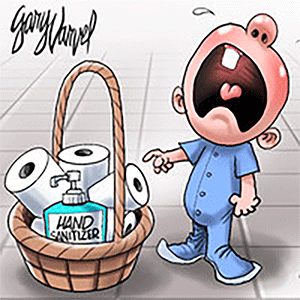My Pet World: For owners of multiple cats, social skills are important
Q: How do I best get our cats to accept one another? We have a 16-year-old named Tyler. Two years ago, 6-year-old Kallie showed up. It took awhile, but they get along fine.
After about a year, we heard about a kitten left in a house to starve, so we rescued her, and named her Holly. She was brought back to life from the brink of death, but we now call this sweetie 'the monster.' She constantly attacks the other two cats. We tried Feliway plug-in diffusers. We've tried to separate them. If they're together, Holly constantly chases them and it's not a happy household.
My husband wants to give her up, but after seven months, I can't. Do you have any ideas? -- D. P., Las Vegas
A: Good for you for saving Holly's life. You should feel good about yourself, and understand none of what's happening now is your fault. Or anyone's fault. Part of the problem may be that Holly, who was apparently abandoned by her mom, never learned cat social skills.
Veterinary behaviorist Dr. Theresa DePorter of Oakland, Mich., says your situation is not hopeless. Your best bet at this point may be to bring in a veterinary behaviorist or a certified cat behavior consultant.
There's a new Feliway pheromone product specifically designed for cats not getting along with one another, called Feliway Multi Cat. Another idea may be Solliquin, a nutritional suppliant, which can help to ease anxiety.
"However, you'll definitely also require a behavior protocol, and perhaps if the situation is as bad as it sounds, anti-anxiety medication," says DePorter. "But you also need a professional to assess that." Your next step is to again separate Holly from the other two cats, and many weeks from now slowly introduce them.
DePorter makes a point of saying, "Never punish or startle any of the cats -- that will only make them more anxious. So no squirting water bottles. Instead, when that stare (to another cat occurs), take a toy (with feathers, for example) and re-direct the cats. With play, you change the emotional state. Of course, this may be easier said than done without help."
Here are some additional tips from DePorter to ease social tension:
--Space. Provide enough real estate for each cat to enjoy preferred resting, playing, and eating activities while still avoiding stressful encounters with housemate cats.
--Distribute important resources. Each cat should have easy access to food, resting areas, scratching posts, toys and litter boxes without encountering an unfriendly cat.
--Don't force cats to interact. Each time the cats experience an aggressive encounter, they are learning to fight next time.
--Guide cats to move away from an aggressive or tense encounter. Encourage either cat to move away by using a sweet, gentle tone of voice. You may coax using food, treats, or toys, or tuna or sardines.
--Be realistic. Some cats are not going to be best pals no matter what you do, but you do want them to be tolerant of one another. After all, living with the stress you describe isn't healthy for people or pets.
By the way, DePorter and I are conducting a study that can help describe what cats are feeling before and after veterinary visits. You can participate by filling out a brief survey just before your cat's next routine visit. For a survey, email TheresaDVM@aol.com.
----
Q: Our 3-year-old Doberman has a gas problem. We've tried several pet foods; nothing has helped. Do you have any suggestions? -- J. J., Cyberspace
A: Begin with a clothespin, that's for your nose.
Chicago veterinarian Dr. Sheldon Rubin says ruling out parasites with a stool sample might be an easy way to begin. And a general veterinary exam with blood work is suggested as well.
Rubin also wants to know if table snacks may play a role in what's happening.
Rubin says, "If you rule out parasites, often excessive gas is related to digestive issues -- perhaps the type of grain in the food. Talk with your veterinarian about choosing a food with a novel protein source and limited or a single carbohydrate."
----
Q: My Border Collie mix loves taking me for a walk. Sometimes on walks, she's good but at other times she's leading me all over. I'm not getting any younger, and if we get snow I'm afraid she'll pull me down. -- B.N., Buffalo Grove, IL
A: Legendary dog trainer Carol Benjamin says she's a fan of body harnesses, which help control dogs. She points out not all brands offer equal performance. She likes the PetSafe Easy Walk Harness, and there are others. "Go to a pet store, and try one on for size," she says. "Give it a test ride."
Of course, equipment is only a part of the story. Benjamin, who is in New York City, points out that Border Collies require physical and mental workouts.
"I assume you know that having a Border Collies means you can have an assistant to help you with the laundry, or to find objects (like your car keys). Seriously, they thrive on being trained to work."
Benjamin adds, "Physical exercise is important, but building up to a three mile run may mean you have a dog who nearly requires that every day. You're not training for the Olympics, just trying to give the dog outlets. And, of course, basic dog training is a must."
Learn more in Benjamin's e-book "Dog Smart," $4.99 at Amazon.
(c) 2016 DISTRIBUTED BY TRIBUNE MEDIA SERVICES, INC.






